Forty-four tablets from our Böhl Collection were restored during summer 2018 as a pilot for a larger restoration project. Carmen Gütschow, a free-lance restoration expert specialising in clay tablets, treated the selected tablets at the atelier of the National Museum of Antiquities. Renske Dooijes, restoration expert of the Museum, kindly hosted and assisted Carmen. On the basis of this pilot Carmen was able to assess and estimate the time and costs involved for the restoration of all tablets in need of treatment. The NINO Research Centre plans to have the Böhl Collection restored over the course of two years (2019-2020), at a cost of ca. € 55.000.
As an example of the pilot restoration we present an administrative tablet from the Ur III Period.
Many fragments of a large tablet, fired and joined in the past. The growth of salt crystals has damaged the tablet and pushed the old joins apart. Several kinds of glue have been used; possibly the tablet was joined on more than one occasion. Some joins are still strong. One of the old glues is milky white, the other is now brown, brittle, and crumbling. Small pieces of yellow fibre stick to the surface in several places. The surface is dirty with dust, fibres, and remains of sand. On the surface and between the horizontal layers of clay are salt crystals; the largest (located between layers) are ca. 0.5 to 1 mm in thickness.
Clean dirt and sand from the tablet; remove old glue; (re)new joins.
The opaque white glue (a thick layer) proved soluble in water after a small test. The tablet is fired, so the fragments could be bathed in water. The water was warmed up so as to dissolve the glue faster; all white glue was removed successfully. The fragments were cleaned by brushing, and bathed again in water. The salt from the surface was removed; some larger crystals growing between the layers could not be removed but were reduced by scalpel. All brown glue was removed with water. The remains of sand were cleaned by scalpel and brush. After drying the fragments were consolidated with polyvinylbutyral (dissolved in ethanol), fixing the split layers, covering the salt crystals in the core. The fragments were glued with polyvinylbutyral, except for a few flakes from the core. Because of the previous salt action the tablet is slightly deformed; there are a few small steps or gaps in several places.
Restauration report and photographs by Carmen Gütschow.
